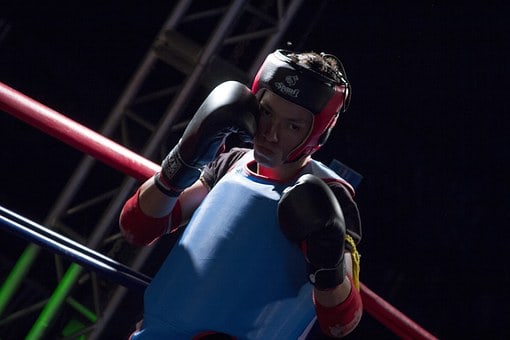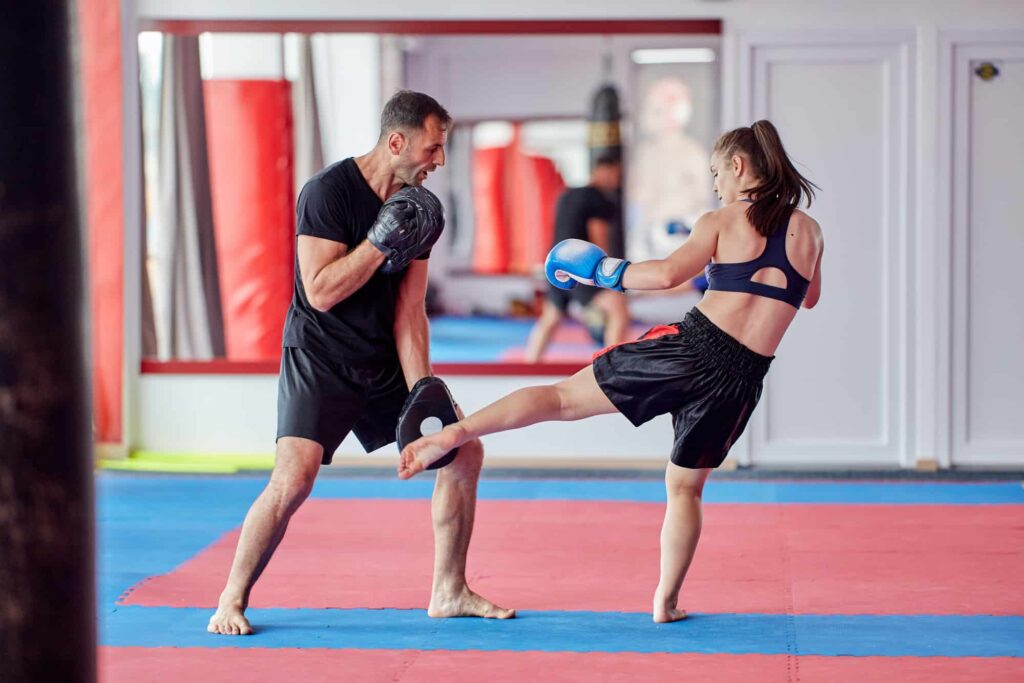Sanda vs Muay thai
What are the main differences between these two unique and powerful combat arts?
This article aims to shed light on the distinguishing characteristics of Sanda and Muay Thai, outlining their unique techniques, training methodologies, and practical applications.
By exploring these aspects, we aim to guide individuals in selecting the martial art that aligns best with their interests, goals, and personal preferences.
Whether you’re a novice seeking to embark on a martial arts journey or an experienced practitioner looking to broaden your skills, understanding the fundamental differences between Sanda vs Muay Thai is essential in making an informed decision about which path to pursue.
And this is where this article will help you in making an informed decision about which is better for you to learn and train.
Sanda AKA Sanshou
Sanda, also known as Sanshou or Chinese Kickboxing, is a combat sport and martial art that originated in China.
Sanda comes from traditional Chinese martial arts styles.
Particularly Sanshou and Shuai Jiao.
Sanda was developed as a means of enhancing hand-to-hand combat skills and providing practical self-defense techniques.
The origins of Sanda can be traced back to the early 20th century when Chinese martial arts underwent a period of modernization and standardization.
During this time, traditional martial arts styles were adapted to suit the needs of the military, emphasizing practicality, efficiency, and combat effectiveness.

Sanda evolved as a response to the growing interest in full-contact fighting and the need to develop a comprehensive combat system.
It combines various striking techniques, including punches, kicks, knees, and elbows, with grappling and throwing techniques.
Sanda practitioners learn to seamlessly transition between different ranges of combat, incorporating both long-range strikes and close-quarter combat techniques.
In addition to its practical applications, Sanda gained popularity as a competitive sport in the 1990s.
It was included in the Chinese National Games and later became an international sport, with numerous Sanda tournaments and championships held worldwide.
The sport gained recognition for its dynamic and exciting nature, showcasing the skills and athleticism of its practitioners.
Main Characteristics of Sanda
One of the distinctive aspects of Sanda is its focus on clinching and takedowns.
Sanda fighters learn techniques from Shuai Jiao, a Chinese wrestling style, which enables them to control and manipulate opponents in close-quarters combat.
They utilize various throws, sweeps, and trips to destabilize their opponents and score points in Sanda competitions.
What is the Difference Between Sanda and Snashou?
Sanda is often used interchangeably with the term Sanshou which translates as ‘free hand fighting’ while Sanda translates as ‘free style fighting’.
In China where the sport originates, Sanda is the term more commonly used while Sanshou is more familiar in North America.
Sanda vs Muay Thai Main Differences
Both Sanda and Muay thai are mainly striking based stand up combat styles.
And while grappling as well as takedowns are included in these systems, the fight stops once a fighter hits the ground and the referee will stand both fighters up to resume the fight.
But there are several distinct differences between these two striking based styles which we will look at more closesly below.
Leg Kicks
Leg kicks are generally not allowed in traditional Sanda competitions.
The emphasis in Sanda competitions is often placed on maintaining a balanced and dynamic approach to combat, which includes utilizing punches, kicks, and knee strikes above the waist to score points.
However leg kicks are a big part of muay thai.

And while leg kicks are generally not scored as highly as body and head kicks, leg kicks are highly effective and damaging and can result in a fight ending with one fighter unable to continue due to the damage to his legs from leg kicks.
Leg kicks are a big part of the Muay Mat style which focuses on punches and combining boxing combinations with heavy low kicks.
This style is also favoured by Dutch kickboxers.
Elbows in Sanda vs Elbows in Muay thai
As muay thai is known as the Art of 8 Limbs’ it is obvious that elbow strikes are a big part of the arsenal available to muay thai fighters.
However in Sanda, elbows are generally not used nor allowed.
In fact muay thai fighters that regulalrly use elbows are known as ‘Muay sok’ and elbows are also a part of the clinching and knee style known as ‘Muay khao’.
Wrestling & Grappling in Sanda vs Muay thai
One of the main differences between Sanda and muay thai is the wrestling and grappling component of these two predominately striking styles.
Upper body grappling or clinching is a major part of muay thai combat.
hours upon hours are spent in training on clinch sparring without gloves and as stated some fighters base their whole fighting style and system upon the clinch and they are known as muay khaop fighters.
The wrestling and grappling component of Sanda is also huge, however it is more akin to MMA or Judo style wrestling.
This includes many of the takedowns which are used in Judo, BJJ and MMA but that are not permitted in muay thai and which include:
- hip throws
- outer reap techniques such as ‘osoto gari’
- inner reap techniques such as ‘o uchi gari’
the three throws above are not permitted in muay thai but are a big part of Sanda stand up wrestling and takedowns.
Difference in Rules and Regulations
There is quite a distinct difference between Sanda and Muay thai in terms of rules and regulations.
Rather than a fighting ring as common in muay thai and kickboxing, sanshou fights take place on an elevated platform called a “leitai,” which is 80cm in height, 8m in width and 8m in length.
Fights consist of 3 rounds of two minutes with a one-minute break between rounds.
A winner is declared if they outscore their opponent and win 2 out of the 3 rounds or by KO.
Scoring Systems
Sanda and Muay Thai employ different scoring systems.
In Sanda, points are awarded for clean strikes, takedowns, and throws. The execution of techniques with power, precision, and control is crucial for scoring.
The number of successful strikes, the effectiveness of takedowns, and the overall dominance in the fight contribute to determining the winner.
In Muay Thai, scoring is based on the effectiveness of strikes and techniques.
Strikes that land with power and precision, as well as effective clinch work and knee strikes, score points.
Muay Thai also places importance on aggression and overall ring control when determining the winner.
Difference in Fight Gear
Traditional Sanda competitions often involve participants wearing a uniform that includes a sleeveless vest, shorts, and protective gear like gloves, shin guards, and headgear.
Muay Thai competitions typically feature fighters wearing shorts, gloves, and sometimes an armband known as Pra Jiet.
“Mongkol” or a traditional headband is usually worn before the fight begins as part of the ceremonial proceedings which includes the traditional “Ram Muay” or ‘boxing dance’ and wai kru which is the tradition of paying respect to a fighters teacher and school.
Sanda vs Muay Thai Final Thoughts
In this post we looked at the main characteristics of Sanda and the main differences between Sand and muay thai when it comes to techniques, strategies as well as the weapons or strikes used in fights.
There are clear differences in terms of the fighting styles especially with regards to the use of leg kicks and elbows which are generally not used in Sanda but are a big part of muay thai.
Also there are distinct differences when it comes to fight gear and the actual ring where fighters compete.
The traditions of ram muay and wai kru also mark a huge difference with Sanda which is more of a modern form of Chinese kung fu with less traditional aspects in comparison to muay thai which is heavily steeped in Thai culture and tradition.



